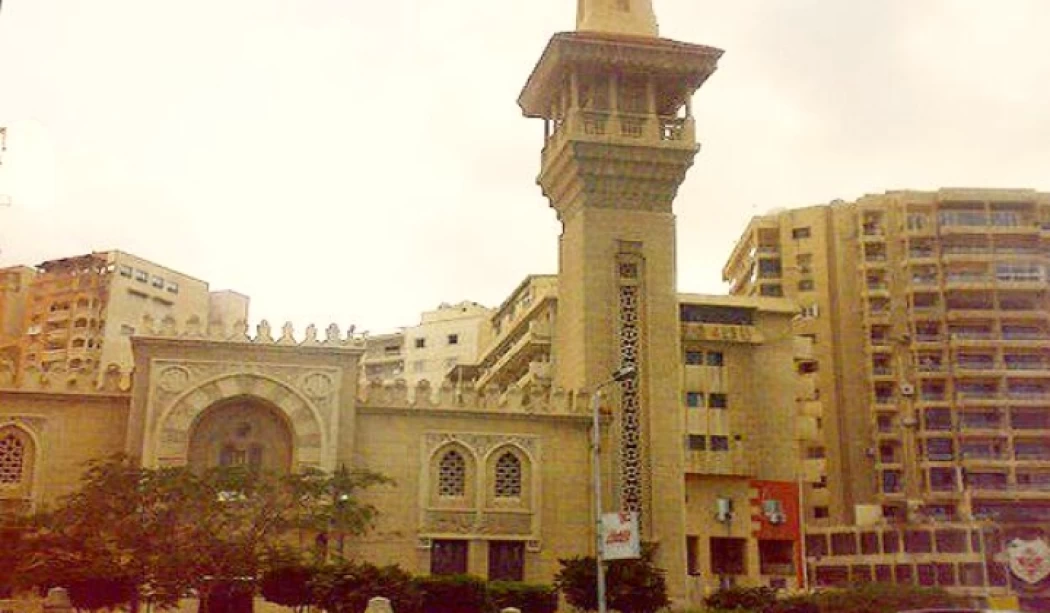
Sidi Gaber Mosque
In the Islamic era, which began with the conquest of Egypt by Amr ibn al-Aas in the year 642 AD, Alexandria became a meeting place for many scholars, imams, and righteous saints, and as was the “Acropolis” in Greek architecture, the mosque became the center of the city and its streets ended. Ibn al-Hakam, the author of the oldest historical text that has reached us about the mosques of Alexandria (which is the Kitab Fattouh Misr), says that it was in the city of Alexandria in the first half of the first century AH, in addition to the mosque of Amr ibn al-Aas (it is likely that it was located in the same place that the mosque now occupies). Al-Omari Al-Atiq, adjacent to the tomb of Abu Al-Darda’, there were five other mosques, which are: The Prophet Musa Mosque, peace be upon him, Solomon Mosque, peace be upon him, Dhul-Qarnayn Mosque, Al-Khidr Mosque, peace be upon him. waterfalls). Opinions differed about the personality of the owner of the mosque buried in the mausoleum next to the mosque, and in his name, the mosque was known, and the most likely opinions are that Sidi Jaber is Jaber bin Ishaq bin Ibrahim bin Muhammad Al-Ansari.
explore more about Alexandria and Sidi Gaber during many of our exceptional Egypt travel packages that also cover most of the history and we recommend you to experience Egypt Christmas tours to see the highlights of Cairo and also get excited and learn about t ancient Egyptian architecture through our Egypt Nile cruise tours and especially in April to enjoy the mild temperatures when you book Egypt Easter tours.
Sheikh Jaber Al-Ansari grew up in Andalusia, then traveled to Fez in the Maghreb, then moved to Tripoli, Libya, and then came to Cairo, and he was a guest of one of his cousins, his nickname Abu Al-Abbas. Al-Ansari moved to Alexandria and built a corner for him in Dahiyat Al-Raml (later turned into the current mosque). The Sheikh remained in that corner until he died in the year 697 AH, at the age of ninety.
The current mosque consists of a square in the middle of a covered courtyard surrounded by corridors on all sides. There are two porticos in the direction of the qiblah.. and one portico on the other three sides. Above the northern portico, there is a second layer dedicated to women’s prayer. At this height, windows have been opened for illumination. *The mosque has three doors or entrances. Among them, there is a door on the southern side (from the side of the tram). It leads to the mosque as it leads to the tomb of Sidi Gaber.. * There is also a door from the northern side (which opens to Port Said Street) * There is a third door from the western side (in front of the Sidi Gaber Palace for tastings). There is the tomb of Sidi Jaber Al-Ansari on the southern side of the mosque. It is a square room..topped by an octagonal neck, it is erected on a horn.
Latest Articles
Admin
Seabourn Sojourn Cruise Stops in Safaga Port
The Seabourn Sojourn, the flagship vessel of Seabourn Cruise Line's ultra-luxury fleet, was built in 2008 at the T. Mariotti shipyard in Genoa, Italy. Measuring 198 metres, it can accommodate up to 450 guests in its 225 spacious all-suite staterooms.
Admin
Norwegian Sky Cruise Stops in Safaga Port
Norwegian Cruise Line operates a cruise ship called the Norwegian Sky. It was constructed in 1999 and can accommodate 2,004 passengers in addition to 878 crew members. The ship has several dining establishments, lounges and bars, a spa and fitness center, swimming pools, and a number of entertainment areas.
Admin
Explora II Cruise Stops in Safaga Port
Explora II, the second vessel in the Explora Journeys fleet, sets sail in 2024 to redefine luxury cruising. With 461 ocean-front suites, 9 culinary experiences, and 4 pools, this haven of sophistication and sustainability promises an unforgettable "Ocean State of Mind" journey to inspiring destinations.
Admin
Mein Schiff 6 Cruise Stops in Safaga Port
The Mein Schiff 6 is the latest cruise ship in the renowned TUI Cruises fleet, offering passengers a luxurious and sophisticated cruise experience. At 315 metres long, this floating resort features a range of dining options, entertainment, and recreational facilities, including a spa, fitness centre, and sports amenities.
Admin
Mein Schiff 4 Cruise Stops in Safaga Port
When the Mein Schiff 4 cruise ship docks in Safaga, Egypt, passengers are granted access to a realm of ancient wonders. Aboard this state-of-the-art vessel, guests can embark on meticulously curated shore excursions that showcase the region's most iconic landmarks, including the Giza Pyramids, the enigmatic Sphinx, and the remarkable tombs and temples of the Valley of the Kings in Luxor.
Admin
MS Europa Cruise Stops in Safaga Port
The Silver Moon, Silversea's latest flagship, is a luxury cruise ship that offers an exceptional travel experience for Venezuelans exploring Egypt. With a capacity of 596 guests and an impressive 40,700 gross tonnes, the Silver Moon maintains the small-ship intimacy and spacious all-suite accommodations that are the hallmarks of the Silversea brand.






-webp.webp)







